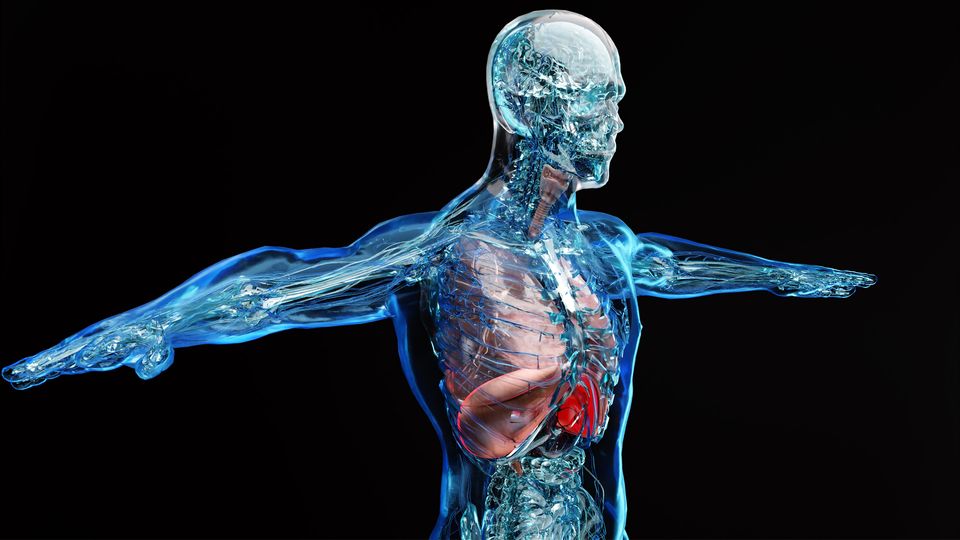Five Steps Towards the Human Cell Atlas
Listicle
Published: January 8, 2024
|
Joanna Owens, PhD
Joanna Owens holds a PhD in molecular toxicology from the University of Surrey. She has over 20 years’ experience writing about a wide range of scientific topics in biosciences, pharmaceuticals and biotechnology.
Learn about our editorial policies

Credit: iStock
The Human Cell Atlas (HCA) is an international consortium working towards the goal of creating an atlas of every cell type in the human body. Since the HCA was established in 2016, thousands of researchers have used the latest emerging single-cell analysis technologies to examine human cells in unprecedented detail.
By charting the different cell types, positions and interactions, and providing open-access maps of their discoveries, researchers worldwide are improving the understanding of the biology underpinning health and disease.
Download this listicle to explore how the HCA project is providing insights into:
- Pregnancy disorders
- Lung diseases
- Brain cell types
Listicle
1
Five Steps Towards the Human
Cell Atlas
Joanna Owens, PhD
The Human Cell Atlas (HCA) is an international consortium of more than 3,100 members from over 98
countries* who are working towards the goal of creating an atlas of every cell type in the human body.
The initiative was co-founded in 2016 by Dr. Aviv Regev, then at the Broad Institute of MIT and Harvard
(USA), and Dr. Sarah Teichmann at the Wellcome Sanger Institute (UK), initially to exploit the analytical
power of single-cell genomics. Now, using more sophisticated single-cell omics and spatial biology
tools, researchers can factor in other parameters, such as protein and nucleic acid abundance and cell
location.
Since its inception, the HCA has identified thousands of new cell types and its research is already
providing insights to ensure safer pregnancies, fight COVID-19 and tackle lung diseases. This listicle
highlights some of the recent research contributing to the HCA project and explores the wider implications of the work.
Understanding communication between womb and placenta
During the growth of a human fetus, there is an ongoing conversation between cells in the placenta –
which develops from the fetus – and cells within the maternal uterus in which it grows. This communication is critical for ensuring that the mother’s body accepts the fetus, and when this process goes wrong,
it can cause common pregnancy disorders such as pre-eclampsia. Although researchers knew that
cells called trophoblasts derived from the placenta infiltrate the mucosa of the uterus, the exact nature
of the intercellular communication had yet to be decoded. As part of the HCA consortium, researchers generated a spatially resolved multiomics single-cell atlas of this interface, which enabled them to
characterize the full process of trophoblast differentiation.1
This allowed them to reveal the transcription
factors involved in sending messages to the maternal cells, triggering the creation of new blood vessels,
and ensuring the fetus can develop unharmed. This first-of-a-kind map of the earliest stages of human
pregnancy will provide insights into what goes wrong in pregnancy disorders and could help ensure more
pregnancies have a healthy outcome.
Characterizing lung diseases
In June 2023, HCA research culminated in the publication of the largest and most comprehensive cell
map of the human lung.2
Single-cell analysis of healthy and diseased lungs had been limited by the
number of samples and individuals included in each study, but now researchers have brought together
49 different datasets from 40 different studies into a single integrated atlas by using machine learning.
FIVE STEPS TOWARDS THE HUMAN CELL ATLAS 2
Listicle
The data comprises every single-cell RNA-sequencing lung study published to date, incorporating over
2.4 million cells from 486 individuals. The atlas combines data from healthy people with data from people
with more than ten different lung diseases, alongside information on age, sex and smoking history. In
addition to revealing new and rare cell types and highlighting differences between healthy individuals,
there were also shared commonalities between lung diseases. For example, a subset of pro-inflammatory macrophages had similar gene activity in lung cancer, lung fibrosis and COVID-19, which suggests they
might be important in the build-up of scar tissue in these conditions. By looking across different diseases
in this way, it becomes possible to identify common targets for drugs, which could lead to the development of new treatments more quickly than if they were studied in isolation.
Understanding the immune response to COVID-19
One of the earliest areas to benefit from researchers working within the HCA initiative was the COVID-19
pandemic. Researchers used single-cell genomics to identify subsets of cells within the nose targeted
by SARS-CoV-2, which had increased levels of angiotensin-converting enzyme 2 (ACE2) which the virus
uses to enter host cells, helping to reveal the mechanism of transmission within weeks of the pandemic
starting.3
More recently, the HCA network has produced a series of tissue atlases aimed at revealing the
biological changes underpinning the multiple organ failure seen in the most severe COVID-19 cases.4
Using autopsy tissue samples from the lung, kidney, liver and heart of donors who died of COVID-19, they
were able to use computational modeling to generate single-cell and spatial COVID-19 atlases for each
tissue. This revealed evidence of substantial remodeling in different tissues, alteration of host biology in
different tissues and changes in gene regulation in heart tissue linked to disease severity. The COVID-19
atlases provide a foundation from which to understand the impact of severe SARS-CoV-2 in the body’s
different systems, which could lead to new treatments that prevent organ failure in those most at risk.
Revealing new types of brain cell
In October 2023, researchers in the NIH-funded BRAIN Initiative Cell Census Network (BICCN) published
a suite of 21 research papers in which they mapped almost 100 different regions of the brain of humans
and non-human primates at a molecular and cellular level. The data is contributing towards the HCA.
Each of the studies looked at a different aspect of the atlas. For example, one team using single-cell transcriptomics to study gene activity in individual brain cells revealed that there are more than 3,000 different types of brain cells. Another study focused on understanding the properties of inhibitory neurons and
their electrical properties. Some studies looked at the differences in the brains between individual people, or between humans and our closest primate relatives, and how the many distinct types of cells first
emerge and differentiate. The new research expands previous brain maps – which only focused on a few
regions within the human cortex – to hundreds of regions across the entire brain, providing an unprecedented level of detail. The next stage is to integrate these data into a single Brain Atlas – the foundation
of the HCA Nervous System Atlas, which will ultimately be expanded to include the peripheral nervous
system too.
Multi-tissue atlases
In addition to studies focused on mapping specific tissues and organs, four collaborative studies contributing towards the HCA have published comprehensive cross-tissue atlases, with the potential to provide
a step change in our understanding of immunity and disease.5
Two papers focus on the immune system:
one study sequenced RNA from more than 300,000 immune cells in the body to understand their function in different tissues,6
whereas the other generated an atlas of how the immune system develops
across different organs, including cells lost as we grow up.7
Another multi-tissue project is profiling
FIVE STEPS TOWARDS THE HUMAN CELL ATLAS 3
Listicle
disease-causing genes – those implicated in both rare and common diseases – across all cell types in the
body, to see how their activity changes in different tissues, aiding understanding of disease biology and
how to target disease processes safely and effectively.8
In the final paper, researchers describe an atlas generated by profiling live cells from many organs within
the same donor.9
This “Tabula Sapiens” dataset enables cross-tissue comparison while controlling for
effects caused by genetic background, age and environment, providing a unique and invaluable resource
for studying fundamental biology and disease.
Summary
Since the HCA was established in 2016, thousands of researchers have used the latest emerging single-cell analysis technologies to reveal unprecedented details about the cells in the human body. By
charting the different cell types, positions and interactions and providing open-access maps of their
discoveries, researchers worldwide are gaining new insights on the biology underpinning health and
disease. There are currently 18 biological networks focusing on cell atlases of individual organs or tissues. In addition to those highlighted here, there are researchers working on cellular atlases of the eye,
kidney, liver, gut, heart, breast, musculoskeletal system and more. Each of these networks is progressing
towards the overall HCA goal of generating an atlas of every cell type in the body, taking us into a new era
of biology and medicine.
*Accurate as of November 27, 2023
References
1. Arutyunyan A, Roberts K, Troulé K, et al. Spatial multiomics map of trophoblast development in early pregnancy. Nature.
2023;616(7955):143-151. doi: 10.1038/s41586-023-05869-0
2. Sikkema L, Ramírez-Suástegui C, Strobl DC, et al. An integrated cell atlas of the lung in health and disease. Nat Med.
2023;29(6):1563-1577. doi: 10.1038/s41591-023-02327-2
3. Ziegler CGK, Allon SJ, Nyquist SK, et al. SARS-CoV-2 receptor ACE2 is an interferon-stimulated gene in human airway
epithelial cells and is detected in specific cell subsets across tissues. Cell. 2020;181(5):1016-1035.e19. doi: 10.1016/j.
cell.2020.04.035
4. Delorey TM, Ziegler CGK, Heimberg G, et al. COVID-19 tissue atlases reveal SARS-CoV-2 pathology and cellular targets. Nature. 2021;595(7865):107-113. doi: 10.1038/s41586-021-03570-8
5. Liu Z, Zhang Z. Mapping cell types across human tissues. Science. 2022;376(6594):695-696. doi: 10.1126/science.abq2116
6. Domínguez Conde C, Xu C, Jarvis LB, et al. Cross-tissue immune cell analysis reveals tissue-specific features in humans. Science. 2022;376(6594):eabl5197. doi: 10.1126/science.abl5197
7. Suo C, Dann E, Goh I, et al. Mapping the developing human immune system across organs. Science.
2022;376(6597):eabo0510. doi: 10.1126/science.abo0510
8. Eraslan G, Drokhlyansky E, Anand S, et al. Single-nucleus cross-tissue molecular reference maps toward understanding
disease gene function. Science. 2022;376(6594):eabl4290. doi: 10.1126/science.abl4290
9. Tabula Sapiens Consortium, Jones RC, Karkanias J, et al. The Tabula Sapiens: A multiple-organ, single-cell transcriptomic atlas of humans. Science. 2022;376(6594):eabl4896. doi: 10.1126/science.abl4896
Download the List for FREE Now!
Information you provide will be shared with the sponsors for this content. Technology Networks or its sponsors may contact you to offer you content or products based on your interest in this topic. You may opt-out at any time.


